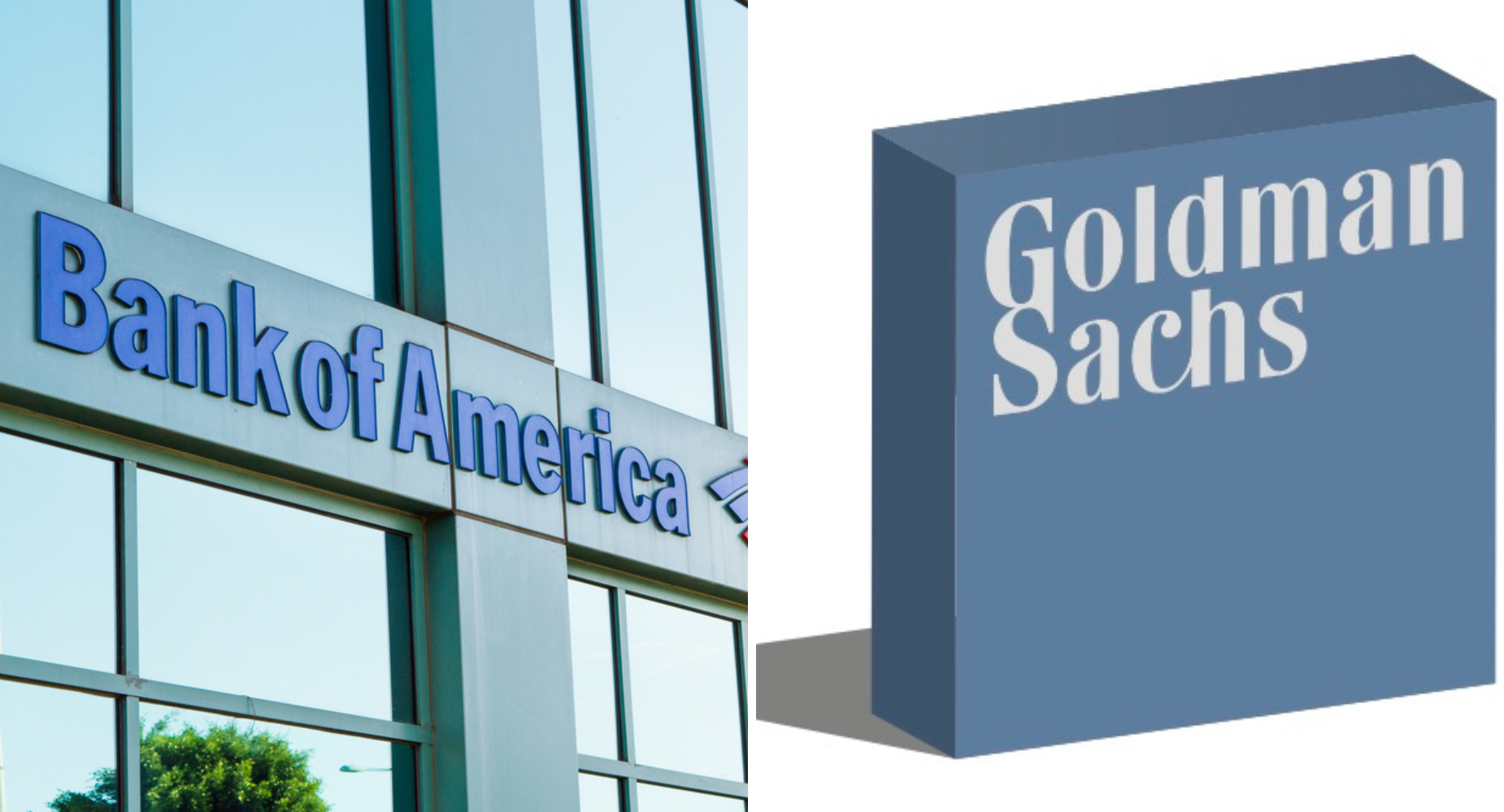
- Stocks
BoA and Goldman Sachs exceed expectations
Do you want to know how to make money from this?
Register for free and get expert advice, access to a training course and webinars.
Key points:
- Bank of America posted strong results in the third quarter, despite a drop in earnings due to rising interest rates on deposits.
- Goldman Sachs also surpassed analysts’ expectations, showing profit growth in the third quarter.
- Employment growth, wage increases, and lower interest rates contributed to increased business activity in the banking sector.
Despite a decline in third-quarter profits caused by rising deposit interest rates, Bank of America delivered results that exceeded market expectations. This achievement was driven by successful operations in investment banking and trading.
A similar trend is observed among other major financial institutions like JPMorgan Chase, Goldman Sachs, and Citigroup. Improved client sentiment and favorable market conditions boosted these banks’ profitability through increased deal volumes.
What enabled Bank of America to achieve strong results?
Positive dynamics in investment banking and trading contributed to Bank of America’s profit growth in the third quarter.
Rising client confidence spurred market activity, leading to a significant 18% increase in investment banking fees compared to the same period last year. The growing demand for debt and equity issuance services was the main driver of this trend. Notably, underwriting income surged by 39.7%, and syndication fees rose by 31%.
CEO Brian Moynihan described the company’s financial performance as “solid,” highlighting positive developments in investment banking, asset management, and trading. He also expressed confidence that, after reaching a low this quarter, the bank’s net interest income would begin to rise.
A recovery in the mergers and acquisitions market, further stimulated by the recent Federal Reserve interest rate cut, also contributed to higher advisory fees for BofA. Analysts expect this trend to continue.
Positive momentum is also evident in the sales and trading segment, where revenue grew by 12% to $4.9 billion. For the tenth consecutive quarter, growth was driven by strong equity trading (up 18%) and fixed-income, currency, and commodity trading (up 8%). Active markets and expectations of lower interest rates from the Fed were key factors supporting equity trading growth in the third quarter.
The growth of the client base and asset market value led to an 18% increase in client account balances, reaching $4.2 trillion, which in turn contributed to an 8% increase in asset management and investment revenue, reaching $5.8 billion.
Despite positive results, analysts are cautious about the company’s stock’s future growth prospects, linking it to expectations of more moderate investment banking revenue growth, given the already high levels achieved.
Goldman Sachs shares rise 3% after report
Goldman Sachs delivered excellent financial results in the third quarter, exceeding analysts’ expectations. Profit growth was driven by a recovery in the capital markets, reflected in increased bond sales, equity placements, and mergers and acquisitions activity. Positive financial market dynamics led to the company’s stock rising more than 3% in a single day.
Goldman Sachs’ success reflects the overall trend in the U.S. banking sector. JPMorgan Chase and Citigroup also reported positive performance, driven by activity in the investment banking sector. Improved economic prospects and rising investor confidence boosted demand for financial products and services.
Goldman Sachs CEO David Solomon emphasized that the bank is seeing significant pent-up demand from clients. The growing volume of pending deals indicates positive prospects for the investment banking business.
Analysts link the positive market dynamics to improved macroeconomic indicators, such as employment and wage growth, as well as the Federal Reserve’s easing of monetary policy. Lower interest rates have stimulated business activity and contributed to an increase in deal volume.
Do you want to know
How to make money from the news
Register for free and get:
- Expert consultation;
- Access to the training course;
- Opportunity to participate in webinars

